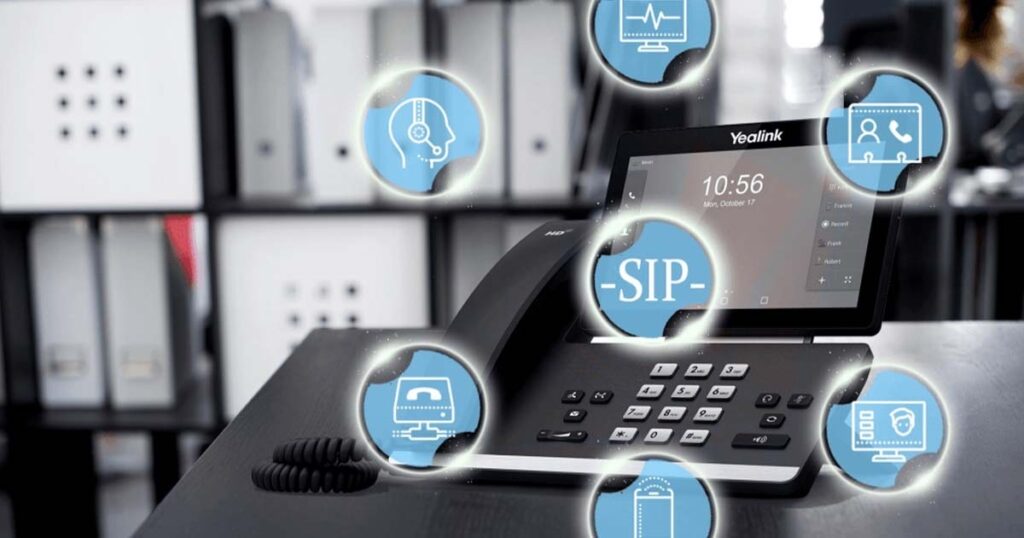Session Initiation Protocol (SIP) trunking may sound like a distant technical subject for the average business owner. Optimizing communication systems in any workplace that require efficient voice communication solutions is an increasingly common implementation.
The growth of SIP trunking is a testament to the efficiency of the internet age. Businesses are increasingly tailoring their marketing to target customers online. Additionally, the integration of internet solutions in enterprise management is a necessity. People’s homes are also increasingly digital, with various internet of things devices working together seamlessly.
A transition to internet systems is inevitable. Before the pandemic, few people knew of Zoom. Today, it is a staple in remote systems. Such positive disruption is commonplace in many sectors, and SIP trunking is one example.
Understanding SIP Trunking
Before delving into the improvements SIP trunking adds to a business, let’s describe what SIP trunking entails. For decades, traditional telephone systems that relied on significant cabling within an office defined voice calls in an office environment.
In the internet age, things changed dramatically. The advent of Voice over Internet Protocol (VoIP) was a natural development to improve traditional telephony systems. Just as the name sounds, it refers to any service that allows voice communication over an internet protocol.
Session Initiation Protocol (SIP) is a popular VoIP protocol for voice communication. Its implementation in office communication systems is easy and has won SIP, trunking many fans across the business world. Besides, it can easily complement existing telephony systems and add reliability and efficiency to analog circuits.
SIP trunking allows an office or business to connect to regular phone networks or mobile devices. Therefore, the office can connect to other phones without using similar digital telephony systems.
Here are a few ways that an office can transform its communications using SIP trunking services:
1. Scalability
The internet brought the entire world to people’s palms and screens. SIP trunking achieves a similar effect, in the relative sense, for voice calls. Users have an easily scalable system that offers multiple channels per trunk, allowing an office/business to scale significantly. The ability of a user to add multiple callers on the network seamlessly enables organizations to scale up their communication systems as needed, which provides a significant advantage over analog telephony systems.
The scalability possibilities allow businesses and organizations to expand and operate at an international level. An office does not need multiple networks with bulky hardware for communication with local and international colleagues, ensuring smooth and constructive collaboration.
2. Cost-effectiveness
Technology’s efficiency must be at the bottom line of a business. If it makes financial sense, it makes sense; it has to be the way. SIP trunking integrates calls and cuts hardware installation costs and the general cost of phone calls.
SIP trunking services have more predictable costs and allow offices to cut their telephone expenses by over 50%. The cost-effectiveness is even higher when there is a larger volume of calls. Say goodbye to the days of exorbitant charges for local and international calls, as SIP trunking dramatically reduces international call rates. This model is easy to understand and provides more predictable pricing.
3. Reliability
Ultimately, a reliable telephony system must be available whenever you need to communicate. Organizations in areas that experience bad weather know this pain all too well. That just doesn’t cut it in today’s competitive business environment. Downtime can mean losses running in the thousands for a significant business.
SIP trunking outperforms traditional telephony systems in reliability. By virtue of using an internet connection, calls can be optimized and service interruption reduced to a negligible level. When there is a point of failure in the network for VoIP systems in a specific geographical location, there are back ups that work around this failure. Traditional telephony networks cannot overcome such network breaks until the issue is fixed, costing precious working hours. For an office or business, this constant availability is an asset.
SIP is here to stay
SIP is an integral tool in managing a modern working environment. The resultant cost-cutting and scalability benefits are defining for any business owner. Ultimately, users have clear local and international calls with greater system functionality to add icing on the cake. The above-listed advantages showcase why any business with significant voice communication needs should consider SIP trunking.
